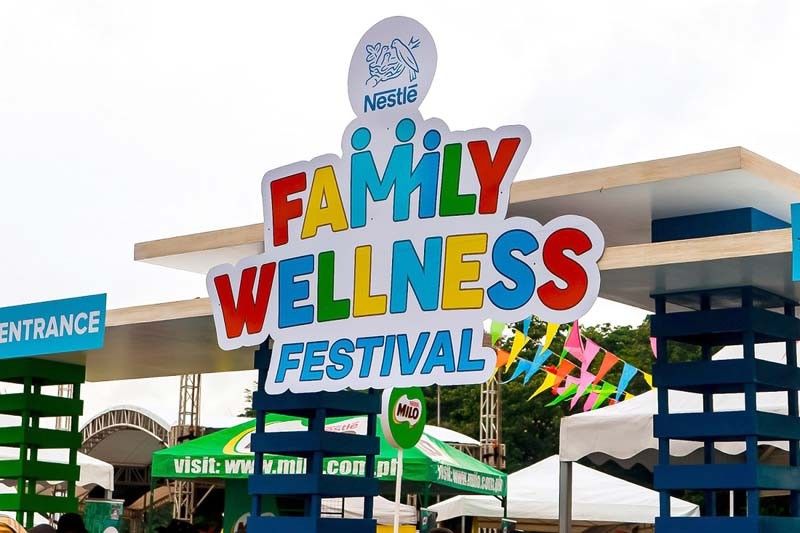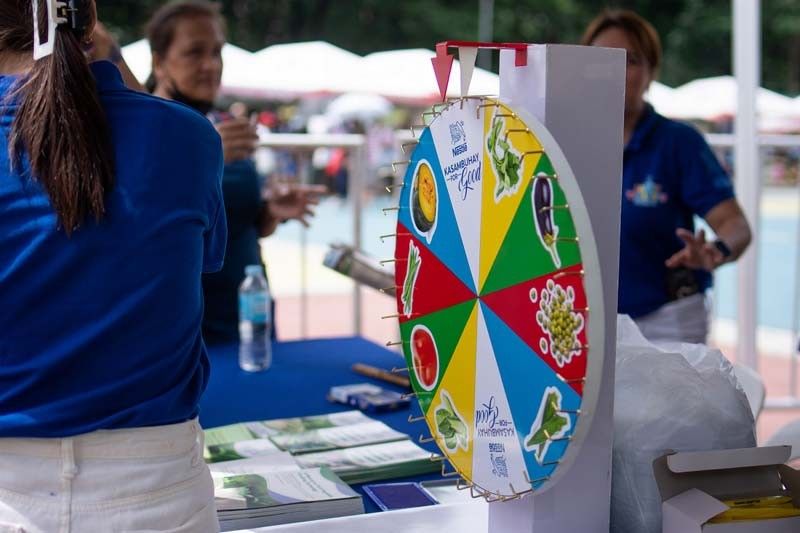Making a healthy diet affordable for every Juan

It’s one topic that’s inarguably close to every Juan’s heart (or should we say, stomach): nutrition and health. To celebrate Nutrition Month this July, Nestle Philippines, in partnership with the Quezon City Local Government, welcomed over 4,000 residents of Quezon City and nearby cities to the launch of its Family Wellness Festival at the Quezon City Memorial Circle.
Expounding on the theme “Healthy diet, gawing affordable for all” (Make a healthy diet affordable for all), Joey Uy III, Nestle Philippines senior vice president and head of corporate affairs, remarked, “We at Nestle Philippines believe that good nutrition starts at home. With the support of Mayor Joy Belmonte and the Quezon City Local Government, we are bringing the Family Wellness Festival closer to communities as we strive to provide QCitizens with the right information and tips that can help them improve their health and wellness.”
Quezon City Mayor Joy Belmonte said, “We strive to provide our QCitizens all the support they need to have a healthy mind and body to make them productive, free from ailments, and able to live longer. Karapatan ng bawat mamamayan ang mabuting kalusugan. But the local government cannot do it alone. We need the support of the private sector to augment our efforts.”
The rains did not dampen this whole-day fun family event as mommies and their kids lined up for freebies from well-loved Nestle brands (Milo, Bear Brand, Maggi, Chuckie, Koko Krunch, Nescafé, Nestea, and Boost) some of us grew up with.
On top of that, experts from the Department of Science and Technology-Food and Nutrition Research Institute (DOST-FNRI) and Department of Agriculture came to share a mouthful of health/diet tips, including how to grow your own veggie garden at home (if you don’t have a garden, try container gardening).
From A to zinc

Edelwise “Ivy” Sicat, Nestle Philippines Inc. nutrition advocacy executive, shared, “In the Philippines, we have the triple burden of malnutrition: under-nutrition among kids, over-nutrition or obesity for adults, and micronutrient deficiency. Nestle is working on that so we’ve fortified our products with the key nutrients that are deficient in the Filipino diet, such as vitamins A and C, zinc, calcium, iron. We’ve also reduced some of the sensitive ingredients, like sugar, fat, salt, in Nestle products.”
What’s Pinggang Pinoy and what’s in it?
“It’s our go, grow, glow plate-based guide for Filipinos on the proper amounts and kinds of food we eat per meal,” Ivy explained. “According to the FNRI, half of the Pinoy plate would consist of rice and the other half would have a little fish and some vegetables. If you have so much rice, your meal is not balanced and if you continue with this diet for a long time, you will have a problem.”
Ivy quickly added, “An adult will eat one to one-and-a-half cups of rice (the average cup measuring 240ml). But it’s not just the rice. As nutritionists, we don’t want to demonize just one food item; we look at the total diet of the individual. For instance, you’re just eating a cup of rice, but your viand is very high in fat and you’re not eating any vegetable. That’s certainly not a good combination.”
But how do we make healthy eating available to Filipino families?
“Food insecurity is a problem, Filipinos have no access to food,” noted Ruby Frane, FNRI senior science research specialist. “We use data from our research to draft policy recommendations. We’re focusing on the deficiencies in our diet, like there’s a high deficiency of vitamin A in infants, its natural sources coming mostly from yellow foods, vegetables, and milk.”
The three A’s of nutrition

“We make our products affordable by making sure they’re accessible,” Ivy asserted. “We’re locally sourcing some of our ingredients to reduce the cost. We also have different SKUs (or units of measure) to cater to different families’ buying capacities. But when we say affordable, it should also be sulit (value for money). That means consumers are getting a product that’s affordable, nutritious and delicious, and contains all the nutrients they need.”
When it comes to nutrition, Ivy identified the key issues as availability, accessibility, affordability, and nutrient density.
With Nestle as every Filipino family’s faithful wellness partner, there’s also the Nestle Wellness Campus, which teaches students in public schools and their parents on the value of proper nutrition and physical activity to address malnutrition.
Ivy elaborated, “At the same time, we also have our dancercise in schools, during the flag-raising ceremony, so that the children will have some physical activity and not just be sitting and exercising their fingers on their gadgets. This has been running for 10 years now (and counting), reaching 11 million students.”
“We want to start with kids so that early on, they already have a good grasp of nutrition and wellness and will opt for an active lifestyle,” said Michelle Pador, Nestle Philippines vice president for corporate communications.
She added with a big smile, “We’re very optimistic that 10 years from now, we will see a healthier Philippines.”
We see a future where every Juan will enjoy good food, good health, and a good life!
* * *
Nestle Philippines is also bringing the Family Wellness Festival to Makati City and Caloocan City next month. Pre-registration is now open via Barangaynestle.com.ph for these next two festivals.



















